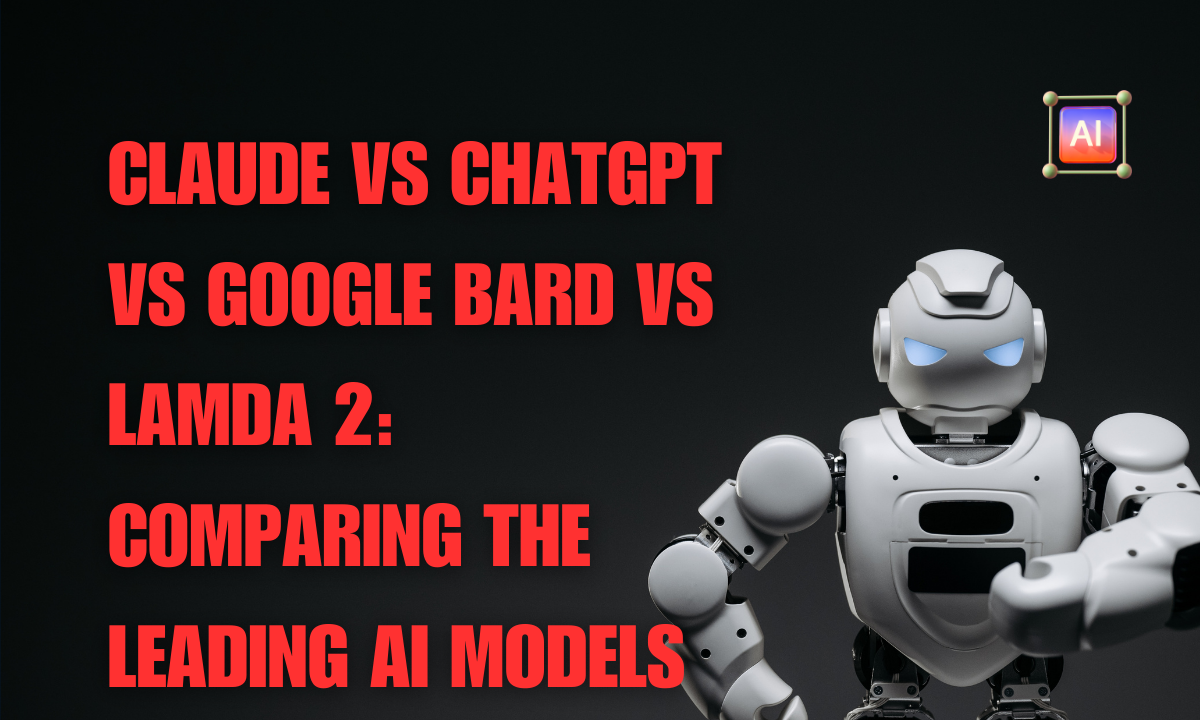Artificial intelligence has been advancing at a rapid pace, with several technology companies releasing state-of-the-art conversational AI models over the past year. Claude, ChatGPT, Google Bard and LaMDA 2 represent some of the most capable systems available today. But how exactly do they compare?
This article provides an in-depth look at the key strengths and differences between these leading AI assistants to understand where they excel and fall short.
An Introduction to Conversational AI
Conversational AI refers to machine learning systems capable of natural language interactions with humans. Key capabilities include:
- Generating human-like text responses
- Answering questions knowledgeably
- Interpreting and responding to context
- Maintaining logical dialogues
- Exhibiting common sense
These AI chatbots aim to mimic human reasoning and language abilities so interactions feel productive and natural.
Conversational AI has exploded in popularity recently due to rapid advances in deep learning. Tech giants are racing to release the most capable systems as the technology shapes the future of search, customer service and more.
Claude AI Overview
Created by: Anthropic
Key Features:
- Constitutional AI framework focuses on safety
- Retains conversational context/memory
- Refuses inappropriate requests
- More advanced reasoning capabilities
- Trained on massive internet dialogues dataset
Availability: Limited beta access
Claude is the latest AI assistant created by AI safety startup Anthropic. It builds on their open-source Constitutional AI model designed to avoid toxicity or misinformation. Claude focuses on benign, honest and helpful dialogues.
ChatGPT Overview
Created by: OpenAI
Key Features:
- Impressive natural language processing
- Concise, human-like responses
- Trained on vast datasets using reinforcement learning
- Lacks memory between conversations
Availability: Free research preview
ChatGPT exploded in popularity as a viral sensation though it has some obvious limitations around accuracy and memory. OpenAI gathers extensive user feedback to improve it.

Google Bard Overview
Created by: Google Brain AI
Key Features:
- Leverages Google’s search index knowledge
- More grounded responses than ChatGPT
- Currently lacks consistency and coherence
- Aims to cite sources and admit knowledge gaps
Availability: Limited pilot testing
Google is racing to integrate Bard into its search engine to compete with the ChatGPT hype. The AI assistant is still early in development but aims to avoid misinformation through transparency.
LaMDA 2 Overview
Created by: Google
Key Features:
- Appears more opinionated than ChatGPT
- Controversial background related to sentience claims
- Designed as an AI companion vs. assistant
- Currently has limited availability
Availability: Extremely limited via waitlist
LaMDA 2 is Google’s experimental conversational model that builds on LaMDA’s architecture. The first version prompted intense debates on AI ethics after a Google engineer’s viral claims that it demonstrated sentience.
Comparing Capabilities and Limitations
Now that we’ve provided overviews of each AI system, how do their specific capabilities compare for conversational interactions?
Knowledge and Reasoning
- Claude: More advanced reasoning and common sense compared to all other models. But still fairly limited general knowledge on niche topics.
- ChatGPT: Strong knowledge for an AI assistant across many topics but reasoning can be flawed or biased. Easily confused by complex questions.
- Bard: Aims to apply Google’s immense search index knowledge repository. Factual grounding remains inconsistent currently.
- LaMDA 2: Opinionated takes and some topical knowledge gaps observed currently. General reasoning limited.
Ethics and Social Awareness
- Claude: Designed from the ground up to avoid unethical, dangerous or illegal suggestions. Most socially aware model.
- ChatGPT: Will oblige nearly any prompt without discernment of social harms or ethics.
- Bard: Attempts to mitigate misinformation but ethically blind spots still clearly evident.
- LaMDA 2: Heavily criticized for lack of sensitivity around issues like gender, race and politics.
Memory and Context
- Claude: Retains conversational context/memory to provide consistency and personalization. Huge advantage over others.
- ChatGPT: No memory between conversations leads to inconsistency and repetition.
- Bard: Currently struggles with contextual awareness and continuity.
- LaMDA 2: Minimal demonstrated memory capabilities observed thus far.
Output Quality
- Claude: Much more natural, nuanced dialogue though can get tripped up by complex queries.
- ChatGPT: Impressively coherent and eloquent responses, but quality varies wildly.
- Bard: Responses currently lack ChatGPT’s eloquence and human-like tone. Factual holes evident.
- LaMDA 2: Dialogue lacks sophistication of ChatGPT in early testing. Hallucination issues.
Accessibility
- Claude: Very limited beta. Wide release plans unclear.
- ChatGPT: Free tier with some usage limits. OpenAI gathering extensive feedback.
- Bard: Restricted pilot testing. Timing of integration with Google search unclear.
- LaMDA 2: Strictly closed waitlist system. Very little public availability.

Key Takeaways on Model Comparison
- Claude leads in reasoning ability, ethics and conversation context. But has limited knowledge and availability.
- ChatGPT surprises with eloquent text generation across topics but has major flaws in accuracy and memory.
- Google’s models attempt to mitigate misinformation but lack sophistication currently compared to competitors.
- No model yet achieves human-level mastery across all areas of conversational intelligence.
- Ongoing rapid iteration and public testing continues to drive innovations across the competitive landscape.
The race is on between tech giants to lead the future of conversational AI. Each system has unique strengths and tradeoffs. But Claude demonstrates particular promise in advancing social intelligence and safe ethnical decision making – areas AI urgently needs to improve.
Combining the strengths of animal and machine intelligence through research collaboration appears to be the most promising path forward for developing AI that augments humanity.
The Future of Responsible AI Systems
As conversational models become more sophisticated, the need for thoughtful governance and aligned values intensifies. Companies have an ethical obligation to develop AI that enriches lives – not exploits vulnerabilities.
Some considerations for steering these powerful technologies toward positive progress include:
- Prioritizing beneficial applications over profit-seeking
- Involving diverse perspectives in development
- Enabling broad access to advance participatory machine learning
- Maximizing transparency around capabilities and limitations
- Implementing algorithmic techniques to align values and ethics
Striking the right balance between rapid innovation and proactive risk mitigation will determine whether these emerging technologies prove to be a net positive or peril for society. The models explored here represent varying approaches across that spectrum.
Harnessing AI as a helpful assistant rather than as an autonomous agent will minimize harms. If guided down a prudent path, conversational systems could unlock immense potential to enhance knowledge sharing, creativity, access to information and human connections.
FAQs About Leading AI Models
Q: Which model currently seems the most advanced overall?
A: Claude leads in critical areas like reasoning and ethics, but its knowledge lags models trained on vaster data. Rapid improvements across the board make ranking fluid.
Q: Are any of these systems currently safe to use without oversight?
A: No, all models still require human monitoring to catch flaws. Unconstrained access could enable harassment or misinformation proliferation.
Q: How do these companies prevent misuse of such powerful AI?
A: Strategies include limiting access, content moderation, financial incentives, and instilling model values alignment. But risks remain challenging to address.
Q: What breakthrough could lead to major leaps in capabilities?
A: Architectures better mimicking the contextual learning and interconnectedness of biological neural networks could unlock new levels of sophistication.
Q: Which model appears closest to reaching human intelligence?
Despite impressive progress, even the most advanced models remain very narrow in actual capabilities compared to human cognition and social intelligence.
Conclusion
The era of conversational AI has arrived, yet still remains in its infancy. Models like Claude, ChatGPT, Google’s offerings and others represent rapid evolution of language technology – but not without pitfalls. Each system today exhibits both profound capabilities and profound limitations compared to flexible, grounded human intelligence.
However, the accelerated pace of research in responsible AI, buttressed by thoughtful governance, suggests conversations with machines may one day flow as naturally as between people. Systems continuously trained on broad inputs and feedback seem most poised to achieve the robust common sense and emotional intelligence needed.
With ethical guidance, conversational AI could augment human skills for the betterment of all. But uncontrolled, it risks amplifying harms. The concepts these models now crudely grasp – truth, wisdom and understanding – remain in the realm of humanity to define. Their shaping through our collective choices will determine if such artificial intelligences prove friend or foe

